Before we begin, please allow me, Dr Zhu from Sean Family Clinic to express my gratitude for your trust and encouragement.
In just one month, our clinic has treated over 50 patients of all ages, many of whom came with their entire families. The health issues of most patients have been resolved or alleviated, while the effectiveness for some will require more time to be fully assessed.
Case:
During the New Year holiday, an adult failed to control their diet properly, resulting in an acute gout attack in the big toe joint. After one treatment, the redness and swelling of the joint were alleviated, and the pain in the foot disappeared.
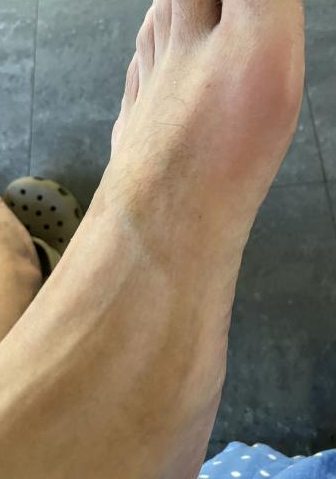
Before
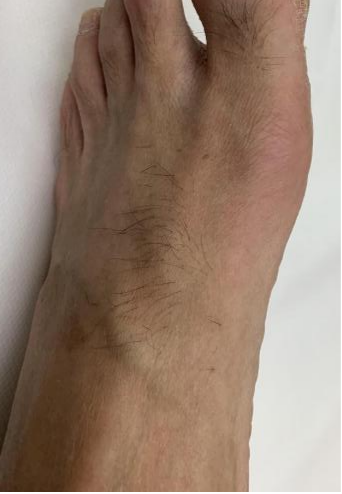
After
Today, Dr Zhu wil share with you the most frequently asked question recently, which is about hay fever. I have summarized some of the most concerning issues for you to answer. While l may not cover everything, and due to limited knowledge, some answers may not be the best, please understand.
Question: What exactly is hay fever, and what is its relationship with allergic rhinitis?
Answer: Hay fever, also known as pollen allergy or seasonal allergic rhinitis, is a common allergic reaction. The high incidence periods are spring and autumn. In recent years, with the rapid development of urbanization and industrialization, the incidence of allergic rhinitis has been increasing year by year, and the age of patients tends to be younger.
The main culprit of pollen allergy is pollen, and the natural spread of pollen is mainly divided into two forms: wind-borne and insect-borne.
The culprits of spring pollen allergy are often not the brightly colored ornamental flowers, but rather plants that look like they wouldn't bloom, such as trees and weeds. This explains why some people still have hay fever even though they don't grow flowers at home.
Another point, if both parents have allergic rhinitis, then their children have a 50% to 80% chance of developing rhinitis.
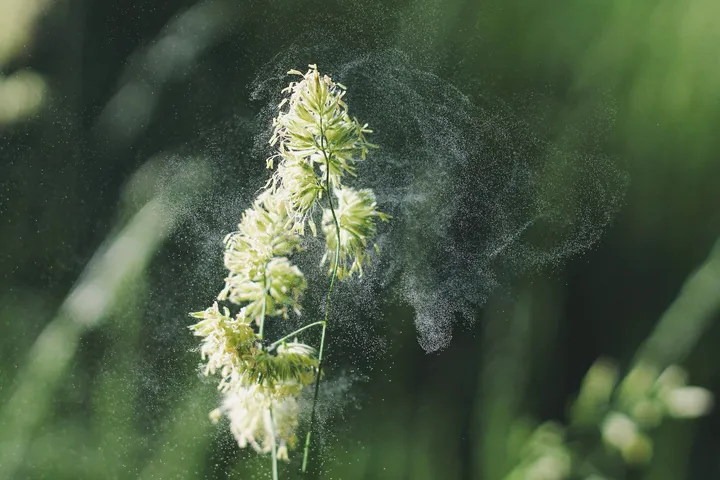
Question: What are the symptoms of hay fever? How can I tell if I have it? What is the difference between it and a common cold?
Answer: A hallmark symptom of hay fever is an itchy nose, and it can be very itchy. It is also accompanied by symptoms such as runny nose, sneezing, nasal congestion, difficulty breathing, paroxysmal coughing in the respiratory tract, chest tightness, shortness of breath, wheezing, and the presence of white mucus, among others. In severe cases, patients may experience sudden asthma attacks, itchy eyes, swollen eyelids, and small bumps similar to hives, which can even lead to weeping.
A common cold may also have symptoms like a runny nose, sneezing, and nasal congestion, but it does not typically include the symptom of an itchy nose. Moreover, a cold usually resolves on its own within about a week, whereas the course of rhinitis caused by pollen allergies is at least a month long, even in the mildest cases.
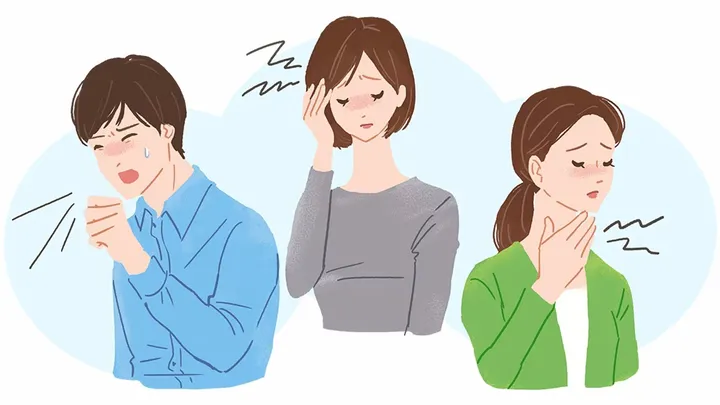
Question: Hay fever is just seasonal, and it will pass if you can endure it, so why treat it? Can allergic rhinitis make you ugly?
Answer: Most rhinitis patients do not have their symptoms relieved, and over time, they may unconsciously breathe through their mouths. When the airflow continuously impacts the hard palate, it can affect facial development, gradually forming a "mouth breathing face" or "adenoid face." It's important to know that once this type of face is formed, it is very difficult to restore.
At the same time, children with hay fever can have three special facial characteristics.
1.Allergic creases: To alleviate nose itching, children repeatedly rub upwards with their hands, pushing and squeezing the tip of the nose, resulting in many horizontal wrinkles on the nose tip.
2.Dennie-Morgan fold: There are obvious folds of skin radiating from the inner corner of the lower eyelid, resembling a silkworm, which can first appear in preschool children.
3.Allergic salute: Due to inflammation, itching, and congestion inside the nose, children involuntarily rub their noses upwards with their hands or fingers, always raising their hands as if saluting.
4.Allergic shiners: Commonly known as "panda eyes," due to swelling of the nasal blood vessels and mucous membranes, poor blood drainage causes congestion of the blood vessels under the skin below the eyes, giving the eyelids a dark shadow. Long-term rhinitis can affect height and weight gain and may also cause inattention and poor memory.
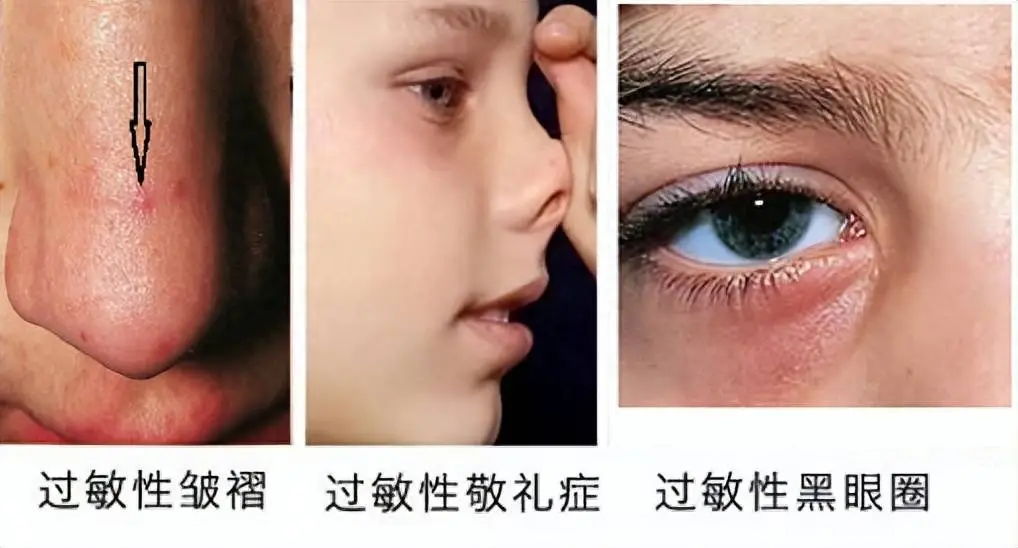
Question: What preventive measures can be taken?
Answer:
1.Wear glasses, masks, hats, etc. when going out during the season when pollen is heavily dispersed.
2. Wear clothes made of smooth surface materials.
3. When returning home, sweep away pollen at the entrance, wash your face, rinse your mouth, and clear your nose.
4. Avoid opening windows to prevent a large amount of pollen from entering the indoor environment.
5. Frequently clean and keep the room tidy.
6. Avoid airing bedding when pollen is heavily dispersed to prevent pollen from sticking to it.
Question: When allergic rhinitis flares up, spraying medication into the nose immediately clears the congestion, but a few hours later the nasal congestion returns, why is that?
Answer: Many nasal sprays contain hormones, which have the effect of contracting the nasal mucosa. After spraying, the swollen turbinates immediately shrink and become smaller, thus clearing the nasal passages. However, frequent use of these nasal sprays can be harmful to the body!
Because they contain hormones, prolonged use can lead to irreversible atrophy or hardening of the nasal mucosa. It's okay to occasionally spray for nasal congestion, but it should not be used long-term.
Children who frequently use hormone nasal sprays may experience abnormal development of the turbinates, and may even have repeated nosebleeds.
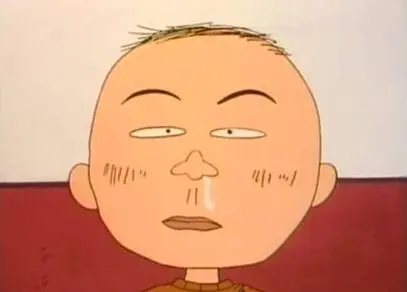
Question: My symptoms are quite obvious, and I've tried antihistamines and sprays, but with little effect. Are there any solutions in Traditional Chinese Medicine (TCM)?
Answer: For patients with acute rhinitis, TCM can employ acupuncture methods, using specific needles for rhinitis, mainly on the face. The treatment time is 30 minutes each time, with intervals of 4 days to a week between treatments, and a course consists of four treatments.
The specific needles mainly target the regulatory nerves of rhinitis, and usually, there will be significant improvement after treatment, with the nose becoming less congested, less runny nose, and no headaches. The key is that acupuncture can improve nasal ventilation symptoms and prevent complications such as otitis media, sinusitis, bronchitis, and asthma caused by chronic hay fever.
Question: Will the rhinitis needles be painful? Are they safe?
Answer: Currently, there are mainly two types of rhinitis needles, targeting the sphenopalatine ganglion and the stellate ganglion, respectively.
The stellate ganglion is formed by the fusion of the lower sympathetic part of the human cervical sympathetic nerve and the first thoracic sympathetic ganglion, which domains the sympathetic nerves of the head, neck, and upper limbs. It is located among important organs of the human body, and blind stimulation is indeed quite dangerous.
On the other hand, the sphenopalatine ganglion is relatively safe. It is the largest parasympathetic ganglion in the human body, hidden within the pterygopalatine fossa. Although the surrounding tissue structure where the needle is inserted is complex, and there is a certain risk during operation, if the operation is strictly in accordance with the specifications, the rare adverse reactions are all within a controllable range.
Dr Zhu has treated hundreds of patients and has not encountered any adverse reactions. As for the claim that the rhinitis needles are very painful, Dr Zhu has not found this to be the case in actual practice. Most patients experience an electric-like reaction, some feel pain, which are all symptoms of the needle getting qi, indicating that there is an effect.
Question: Children are naturally afraid of injections, especially in their faces. What if they know they need to be pricked, they be unwilling. What does Dr Zhu do?
Answer: Indeed, children naturally dislike injections, especially in their faces, so Dr Zhu will communicate repeatedly with the child patient before treatment, building psychological preparation. At the same time, acupuncture is different from ordinary injections; the sensation of the needle is completely different. Most children can accept it after trying one needle.
Of course, this requires the understanding and cooperation of the family, and once the child has personally experienced the pain of rhinitis and the effects of treatment, they can usually accept subsequent treatments after one treatment.
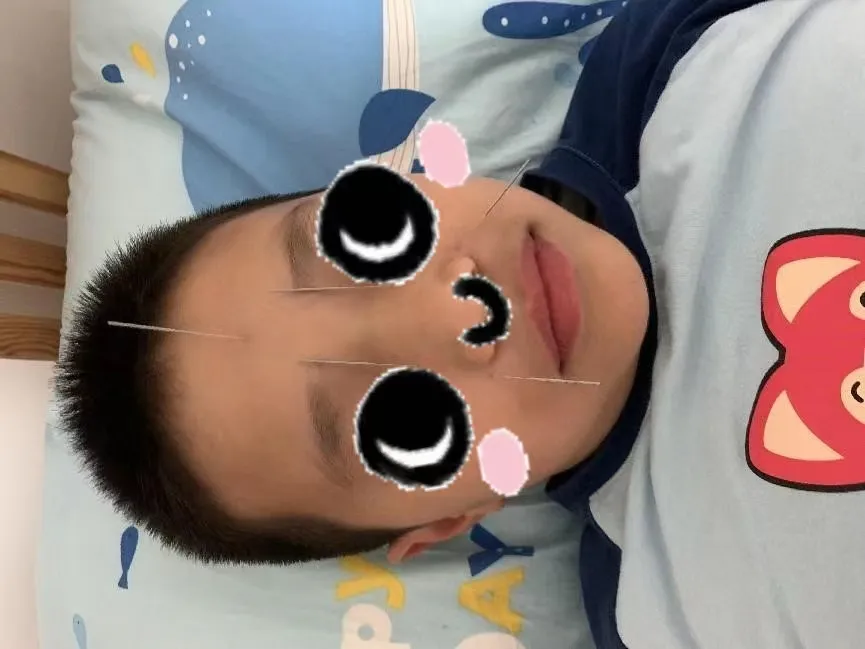
Question: What about little patients under 3 years old?
Answer: For infants and toddlers who are too young, Dr Zhu does not recommend using acupuncture therapy, as the children cry and do not cooperate, which can lead to danger. For children of this age, Dr Zhu advocates using Chinese medicine + manipulation, which has obvious effects. The manipulation varies depending on the symptoms of the child, mainly regulating the deficiencies of the lungs, spleen, and kidneys.
Question: Is it necessary to drink Chinese medicine to treat rhinitis? Is the Chinese medicine bitter? How long do you need to drink it?
Answer: Dr Zhu attributes the cause of allergic rhinitis to yang deficiency of the lungs, spleen, and kidneys internally, and external causes of wind evil attacking. Treatment not only needs to address the clinical issues of the nose but also needs to regulate the spleen and stomach to consolidate the foundation.
The choice of Chinese medicine formulas aims to warm and tonify lung qi, strengthen the spleen and qi, and warm and tonify kidney yang. At the same time, considering the special constitution of the child patients, we use children's granules produced by reputable Chinese medicine manufacturers in Australia, which contain an appropriate amount of sugar, enhancing the acceptability of the child patients without affecting the efficacy of the medicine.
For adults, we use Chinese patent medicine granules, which are more suitable for carrying and taking orally. Generally, medication can be stopped once the symptoms disappear, and long-term medication is not necessary.
Question: After treatment, is it impossible for it to recur?
Answer: Unfortunately, hay fever (allergic rhinitis) is a disease related to the immune system, and any disease related to immunity is currently difficult to completely cure.
However, clinically, there are many hay fever patients who say that their rhinitis has self-healed (self-healing, not cured). This is entirely possible. Many people, through active treatment, exercise, and changing their work and living environment, find that their long-standing rhinitis has disappeared, feeling much more comfortable. This is considered self-healing, not cure.
Dr Zhu's treatment aims to alleviate symptoms and improve physical constitution, the key is to prevent the child's rhinitis from developing into chronic sinusitis, asthma, conjunctivitis, adenoid hypertrophy, secretory otitis media, and adenoid facies. These diseases are much more serious than hay fever.
Some pictures in the article are from the Internet. If there is any infringement, please contact us to delete them.